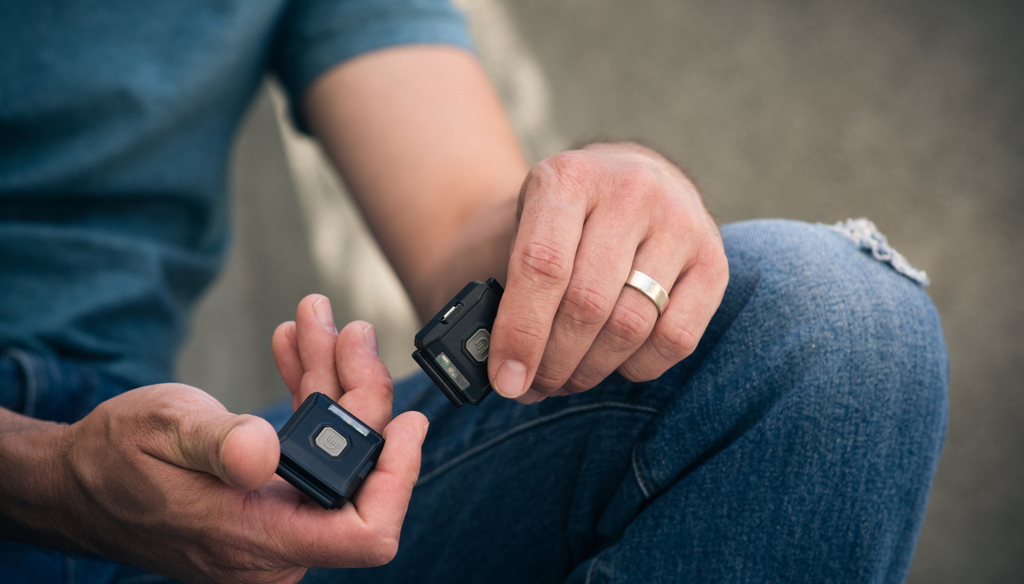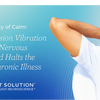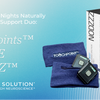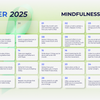Do Stress Relief Devices REALLY Work?

In our fast-paced and demanding world, stress management has become a hot topic of discussion. While you're probably familiar with traditional methods like meditation, journaling and exercise, technological advancements have recently taken it to the next level through the development of stress relief devices.
But do these devices truly deliver on their promises? In this exploration, we will delve into the effectiveness of stress relief devices, separating fact from fiction to uncover whether they truly work or if they're just another fleeting trend in our pursuit of tranquility.
Wired for Stress
Before we explore the intricacies of stress management, it’s important to understand your mind and body’s relationship with stress. Your stress response can be both necessary and useful to survival. It’s the reason you instinctively flinch away when you get too close to a hot stove. It’s how you know to catch your toddler right before they fall. It's what empowers you to produce a 10-page paper overnight when it seemed impossible for the past three weeks. However, it's important to recognize that stress does have its consequences, particularly when it becomes chronic.
Those moments after a stressful event when your heart is racing, your chest is tightening or your palms are sweaty are brought on by elevated “stress hormones,” most notably cortisol and epinephrine (also known as adrenaline) Over time, chronic stress can manifest in various ways, such as persistent fatigue, diminished performance at work, unhealthy eating patterns, and strained interpersonal relationships. What's more alarming is that it heightens the risk of heart attacks, diabetes, and strokes. Elevated stress levels are also linked to a higher likelihood of developing specific psychiatric conditions, particularly depressive and anxiety disorders like major depressive disorder and generalized anxiety disorder.
The Control Center
It's natural to anticipate experiencing a higher level of stress from a major event like a car accident compared to something like accidentally burning tonight's dinner. The reaction to each is an unconscious, automatic decision being driven by a separate set of neural fiber pathways running throughout the body called the autonomic nervous system (ANS). The ANS can be broken down into two opposing components:
- Fight-Flight-Freeze: High-stress situations, perceived danger, or trauma activates the Fight-Flight-Freeze part of your brain, or sympathetic nervous system. It is physiologically characterized by an increase in pulse, blood pressure, and blood sugar, and a reduction in peripheral blood flow.
- Rest and Digest: Opposing your fight-flight-freeze response is the rest and digest part of your brain, or parasympathetic nervous system. It promotes calm, digestion, rest, and sleep. It is physiologically characterized by a decrease in pulse, blood pressure, and blood sugar, with an increase in peripheral blood flow.
Each of these components of the ANS has a “tone,” or a baseline level of activity. The intensity with which we experience the symptoms of stress (e.g., sweaty palms, stomachache, anxiety) at any particular moment depends on the balance between the two; as one component increases, the other decreases. Specifically, stress elevates sympathetic tone while reducing parasympathetic tone. Consequently, it follows logically that relieving stress would involve an increase in parasympathetic tone, leading to a corresponding decrease in sympathetic tone.
The Fear Center
Being reminded of a past stressful traumatic memory can stimulate the “fear center” of the brain (called the amygdala). This can send a widespread message to your ANS control center and significantly increase sympathetic tone. Therefore, your experiences, memories, and past traumas can be hard-wired to your stress response.
The Technology
Now that you’re familiar with how stress is experienced, you can better understand the technology behind stress relief devices.
Some stress relief devices ask you to wear two units at the same time. These devices use a technology called bi-lateral alternating stimulation tactile (BLAST). It is based on a proven technique called eye movement desensitization and reprocessing (EMDR), which is commonly used for treating post-traumatic stress disorder (PTSD).
EMDR operates through a process involving specific visual or tactile sensations delivered in an alternating left-to-right pattern, guided by a therapist. Simultaneously, the patient focuses on a particular traumatic memory. This technique aims to "reprogram" the traumatic memory, leading to a reduction in both the emotional and physical effects associated with the stress response connected to that memory.
This rewiring is accomplished due to a combination of two things:
- The alternating left-to-right pattern increases the rest and digest system, or, parasympathetic tone. This can be seen objectively on EEG activity that mimics patterns associated with deep mediation and sleep and in the reduction of the stress hormone, cortisol.
- The pattern rewires stress triggers by creating new memories that your body will recall from instead of the old, harmful memories.
Stress wearables equipped with BLAST technology adopt the alternating pattern derived from EMDR and offer the convenience for individuals to use them on their own. Unlike EMDR, BLAST does not necessitate the presence of a therapist for supervision nor does it require the individual to select specific triggering memories to process.
Touchpoints™ by TouchPoint Solution are stress relief wearable devices that delivers BLAST in the form of gentle, alternating vibrations. They can be easily worn on wrists, ankles, pant pockets, or simply held in each hand. (Figure 1)
The Placebo Theory
Now that you have an understanding of the technology's origin, you might still wonder whether the wearables themselves genuinely make a difference or if it's merely a placebo effect. To debunk this theory, numerous published peer-reviewed research studies have conclusively demonstrated that Touchpoints effectively reduces both the emotional and physical components of the stress response (refer to Figure 2).

The data showed that within just 30 seconds of using TouchPoints, people experienced a 74% reduce in their stress levels and a 68% reduction in body sensations related to stress. This data combined with our archived data suggest that there is a consistency in offering users significant relief from physiological and psychological stress in about 30 seconds.
A triple blind placebo-controlled trial with athletes showed TouchPoints stabilized cortisol levels during stressful events and reduced the level of stress points even when cortisol traditionally spikes (see figure 3).

Finally, patterns of brain activity as measured by EEG resemble those patterns associated with meditation and deep sleep.
So, do stress relief devices work? Touchpoints is a stress relief device that has multiple validated studies showing its efficacy. Although perhaps not all stress relief devices are effective, Touchpoints is a well-researched, scientifically based solution for stress relief.




